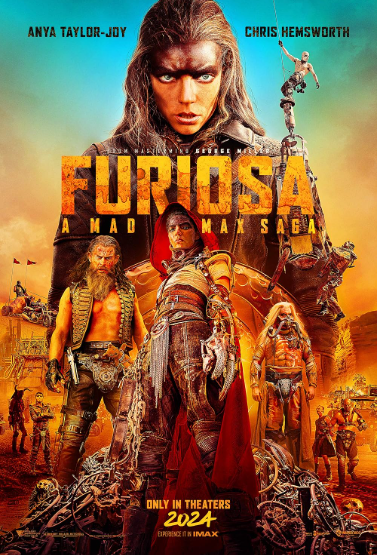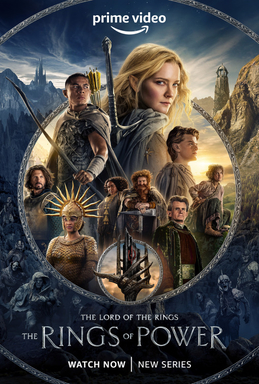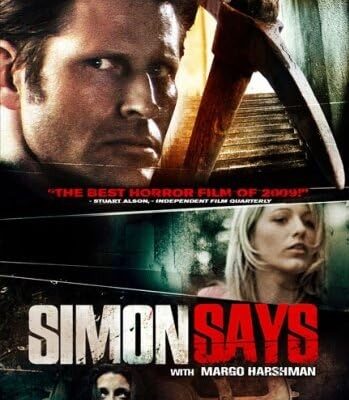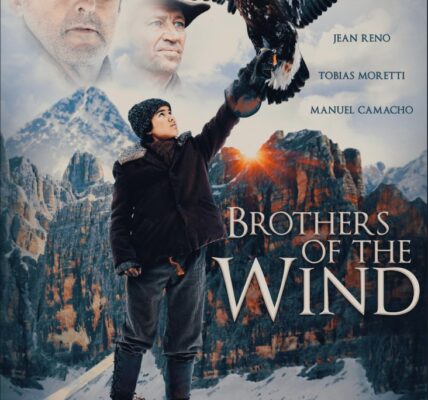1. Plot Summary
Furiosa: A Mad Max Saga tells the origin story of Imperator Furiosa, years before the events of Mad Max: Fury Road. Born in the Green Place, Furiosa (played as a child by Alyla Browne) is kidnapped by a band of ravagers led by the villainous Dr. Dementus. She is separated from her home and family, forced into servitude, and then thrust into a brutal world of survival, cruelty, and conflict. Over roughly 15 years, she grows, fights, and becomes hardened—training, learning, and sometimes acting against foes such as Dementus, the Biker Horde, and the forces of Immortan Joe. Along the way, she builds her strength, resolves to return to her roots, and becomes the fierce warrior seen in Fury Road.
2. Notable Elements
Here are scenes, performances, or technical elements that make the movie stand out (or not quite):
- Performances:
- Anya Taylor-Joy is praised for bringing grit, resolve, and emotional nuance to adult Furiosa—much of it conveyed through action, expressions, and body language rather than heavy dialogue.
- Alyla Browne as young Furiosa also impresses in her early life sequences, particularly under trauma and forced servitude.
- Chris Hemsworth makes for a larger-than-life villain in Dementus: flashy, flamboyant, frightening—and his interaction with Furiosa provides much of the film’s antagonistic energy.
- Action & Set Pieces:
- There is a major action-sequence (often discussed) that took 78 days to shoot, with ~200 stunt performers, known as “Stairway to Nowhere”. It’s one of the film’s visual showpieces.
- Vehicle design, chase sequences, environmental visuals (sand, wastelands) are strong. The film retains the Mad Max franchise’s signature: weird, brutal, kinetic action with creative vehicle combat.
- World Building & Narrative Scope:
- The film spans many years and covers more political/dynastic structure of the Wasteland: places like the Citadel, Gas Town, Bullet Farm are explored more deeply.
- The storytelling is more traditional than Fury Road: more dialogue, clearer motivations, more scenes showing how people organize, fight, ally, betray.
- Some Drawbacks / Missed Notes:
- Some minor characters are underdeveloped.
- Occasional overuse of CGI or visually artificial moments, especially in grand set pieces. Some critics note that parts of the film feel bloated or slow.
3. Themes & Messages
- Identity, Home & Loss: Furiosa’s story is one of being ripped from her home (Green Place), of losing family, of having her identity shaped by trauma. The desire to return, to reclaim what was lost, is a thread throughout.
- Survival & Transformation: The transformation from innocent child to hardened warrior involves sacrifice, loss, often moral ambiguity. What must one endure to survive in a brutal world?
- Vengeance vs. Compassion: Furiosa’s path is partly vengeance (especially toward Dementus) but also trying to hold on to what remains of her humanity. The struggle is not just physical but internal.
- Power, Tyranny, Rebellion: structures of power (Immortan Joe, Dementus, the warlords) vs. those who resist them. How societies in the Wasteland organize under brutal leaders; how individuals fight back.
4. Personal Impressions
What I particularly liked:
- The emotional weight: Furiosa’s arc felt more substantial because the film takes its time to show who she was, how she changed, what she lost. It’s not only nonstop action, but pauses, grittiness, a sense of growing up under cruelty.
- The visuals and action remain big and impressive. Some sequences (especially the choreographed vehicle combats and stunts) are thrilling and feel cinematic.
- The cast choices: Anya Taylor-Joy has the intensity needed, Chris Hemsworth’s performance as Dementus adds a memorable villain, and the young Furiosa sections work very well.
Where it’s weaker:
- The film is long (~148 minutes) and this magnitude can drag; pacing suffers in parts, especially as the world building and political machinations take up screen time.
- Some CGI moments or spectacle, while visually impressive, sometimes feel less grounded than the more raw practical action the franchise is known for.
- Because it’s a prequel to such a beloved film (Fury Road), comparisons are inevitable; it doesn’t quite reach the visceral brilliance or the simplicity of Fury Road’s mythic drive. For some, the emotional stakes don’t feel quite as lean or tight.
5. Audience Recommendations
You might especially enjoy Furiosa: A Mad Max Saga if you:
- Are a fan of Fury Road and want to see more backstory for Furiosa and how she became who she is.
- Like large-scale action films set in harsh, post-apocalyptic worlds with strong visual style and epic stunts.
- Appreciate character-driven stories even within action, especially with emotional arcs of loss, revenge, growth.
It might be less satisfying for:
- Viewers wanting non-stop action: there are quieter parts, political intrigue, buildup.
- Those expecting Fury Road again in pace and tone—this film demands patience to let its story and character arcs breathe.
- Viewers uninterested in origin stories or “prequel baggage”—some plot elements may feel familiar or predictable.
6. Conclusion & Rating
Furiosa: A Mad Max Saga is a strong addition to the Mad Max universe. It doesn’t quite eclipse Fury Road, but it complements it: giving more depth, more context, more heart, while delivering grand, visceral set pieces. If you go in knowing it’s not just more of the same, but a different angle—with its own strengths and trade-offs—you’ll come away satisfied.
Final Recommendation: Worth seeing in theaters (if possible) for the scale, the action, and the performances. A prequel that respects its source while charting its own course.
Rating: ⭐⭐⭐⭐ out of 5
Watch more:




